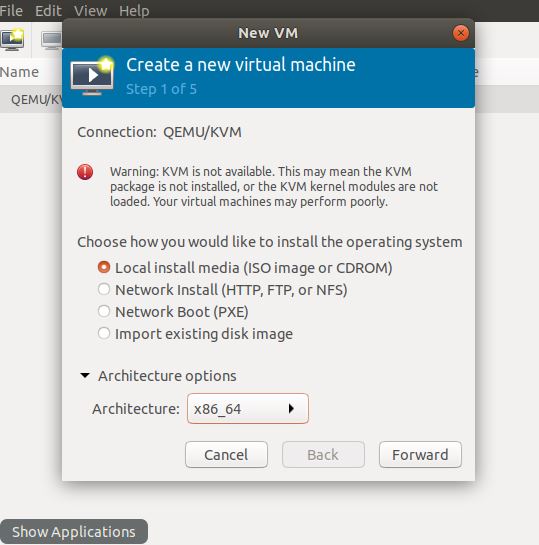As we all know that the VMware and VirtualBox are not the only Virtualization software to create Virtual Machines on Linux. There are few others such as Qemu & KVM. These are the most popular command-line tools to create virtual or delete virtual machines. So, being a command-line tool, it becomes very difficult for both professional and beginner users of Linux to handle them. Since the long command to create and run Virtual Machines on Linux or Ubuntu is hard to remember. To solve this problem there are a variety of Virtual Manager tools are available and one of them is the Virt Manager.
Now, What is the Virt Manager?
The Virt Manager is an open-source application that is meant to provide a Graphical user interface to Virtualization software like QEMU/KVM. It is particularly meant to manage the Kernel-based Virtual Machine (KVM) using libvirt bin. However, other projects such as Xen and LXC (Linux containers) can be managed too. It provides users with a summary of their running VMs including live performance and resource utilization stats of them.
If you haven’t installed the Qemu on your system, yet, then here is the tutorial on it: Qemu Ubuntu Tutorial
So, I assumed that you already have the Qemu or KVM on your Ubuntu system. And now looking for a way to install the Virt-Manager Virtual machine manager for Ubuntu.
Here we are using Ubuntu 18.04 to install Virt-manager but the command the will be same of the older version such as Ubuntu 17.04, 16.04, 15.04…
Steps to install Virt Manager on Ubuntu via command line
- Go to your Ubuntu server or Desktop.
- Open the Ubuntu Command Terminal. Shortcut for that is CTRL+ALT+T
- To install the Virt manager run the following command
-
sudo apt-get install virt-manager libvirt-bin
-
- After the above command go to the applications and you will Virt Manager icon.
- Click on the Virt icon and start creating a virtual machine.

To increase the performance of Qemu on Virt Manager it’s recommended to install the KVM too.
For that first of all check, whether your machine’s CPU supports the KVM or not.
1. The command to check the KVM compatibility:
kvm-ok
2. If your machine CPU supports the KVM then run the given command to install it:
sudo apt-get install qemu-kvm libvirt-daemon-system libvirt-clients bridge-utils
Steps for creating Virtual machine on Virt Virtual machine manager in Linux
- Choose the medium to install the operating system. The options are Local install media (ISO image or CD-ROM), Network Install (HTTP, FTP or NFS), Network Boot (PXE), and Import existing disk image.
- If you want to install using ISO image then select that option and click on the Forward button.
- Browse the ISO image
- Set the Memory (RAM) and number of CPU
- Assign the amount of virtual hard disk space you want to give to your VM.
- Name your Virtual machine and click on the Finish button.
Uninstall the Virt-manager
In case you want to remove the Virt Manager GUI tool from Ubuntu then execute the following command in a command terminal.
sudo dpkg -r virt-manager
In this way, the user can install the Virt- Manager on Ubuntu.
Other resources to read:



Related Posts
How to install Winget package manager in Windows 2022 Server
How to View Listening Ports Using Netstat
How to Install Pygame Zero on Windows 11
Single Command to install Android studio on Windows 11 or 10
How to Install DoXygen in Windows 11 or 10
Google Rolls Out Android 14 Beta 4.1 to Fix Bugs for the Pixel Fold and Tablet